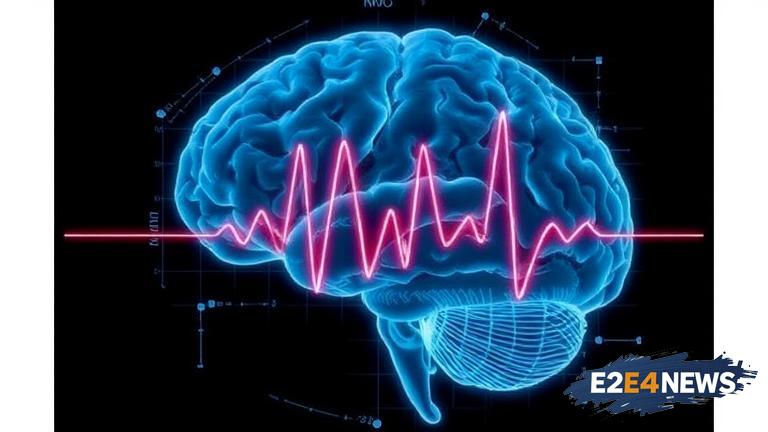A recent study has made a significant breakthrough in the detection of Alzheimer’s disease, identifying a new brainwave marker that could help diagnose the condition earlier and more accurately. The discovery was made by a team of researchers who used advanced brain imaging techniques to analyze the brain activity of individuals with Alzheimer’s disease. The study found that a specific type of brainwave, known as the ‘theta’ wave, was present in higher frequencies in individuals with Alzheimer’s disease compared to healthy controls. This theta wave marker was found to be highly correlated with cognitive decline and memory loss, suggesting that it could be a valuable tool for early detection and diagnosis. The researchers used a combination of electroencephalography (EEG) and functional magnetic resonance imaging (fMRI) to analyze the brain activity of participants. The study involved a large cohort of individuals with Alzheimer’s disease, as well as healthy controls, and used advanced statistical analysis to identify the brainwave marker. The results of the study have been published in a leading scientific journal and have significant implications for the diagnosis and treatment of Alzheimer’s disease. The discovery of this new brainwave marker could potentially lead to the development of more effective diagnostic tests and treatments for the condition. Alzheimer’s disease is a progressive neurological disorder that affects millions of people worldwide, causing memory loss, cognitive decline, and eventually, dementia. Early detection and diagnosis are critical for effective management and treatment of the condition. Current diagnostic methods often rely on cognitive tests and brain imaging scans, but these can be invasive and expensive. The new brainwave marker identified in this study could provide a non-invasive and cost-effective alternative for early detection and diagnosis. The researchers believe that this marker could be used in conjunction with other diagnostic tools to improve the accuracy of diagnosis and monitoring of Alzheimer’s disease. The study’s findings have been welcomed by experts in the field, who believe that this breakthrough could lead to significant advances in the diagnosis and treatment of the condition. The researchers are now planning to conduct further studies to validate the findings and explore the potential of this brainwave marker for clinical use. The discovery of this new marker is a significant step forward in the fight against Alzheimer’s disease, and could potentially lead to improved outcomes for patients and their families. The study’s results are also expected to have significant implications for the development of new treatments and therapies for the condition. As the global population ages, the incidence of Alzheimer’s disease is expected to rise, making the need for effective diagnostic and treatment strategies more urgent than ever. The researchers are hopeful that their discovery will contribute to the development of more effective diagnostic tools and treatments, and ultimately, to improved outcomes for patients with Alzheimer’s disease. The study’s findings are a testament to the power of advanced brain imaging techniques and statistical analysis in uncovering the underlying mechanisms of neurological disorders. The discovery of this new brainwave marker is a significant breakthrough in the field of neuroscience and is expected to have far-reaching implications for the diagnosis and treatment of Alzheimer’s disease. Further research is needed to fully explore the potential of this marker, but the study’s findings are a promising step forward in the fight against this devastating condition.





